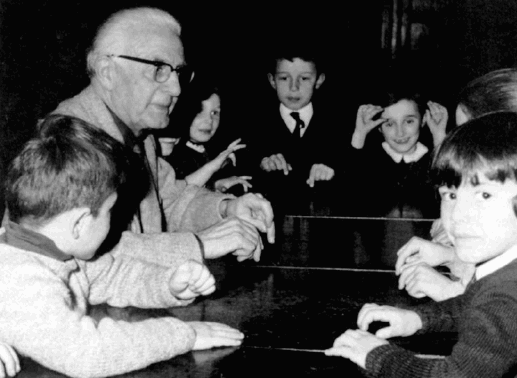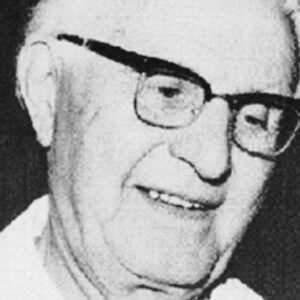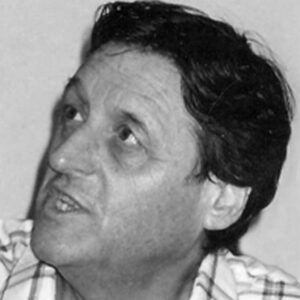History & Founders
The 20th century and music education
The twentieth century saw the emergence and development of numerous works on the education and psychology of the child, and in particular on musical education. Among the pioneers were Maria Montessori, Rudolf Steiner and Emile Jaques-Dalcroze.
Some included music alongside other subjects in general education, while others focused on specific aspects of musical education.
Edgar Willems deliberately placed himself in the middle of these two trends, starting from philosophical ideas and anchoring musical education in the deepest nature of the human being through a continuously coherent pedagogical progression from the first introductory music course to advanced solfeggio and instrumental practice.

Birth of IWF
Founded in 1968 by Jacques Chapuis, the ‘Association Internationale des Professeurs d’Éducation Musicale Méthode Edgar Willems’ has evolved over the years to become the ‘Willems® International Federation’.
Its members are spread over some thirty countries.
The Federation abstains from all political and religious activities.
Its aim is to promote the development and international influence of the work of Professor Edgar Willems in the service of musical education, by :
The founders

Edgar Willems
1890 – 1978
Biography
Very early on, he became interested in various idealistic and spiritualist circles and also associated with numerous painters and poets; in search of the realization of an ideal, he briefly shared the communal life around Raymond Duncan, the brother of Isadora (the goal was to relive, in the 20th century, the Greek ideal through music, movement, weaving, painting, and philosophy, all of which were practiced daily). It was in Paris, at the Veilleur spiritual research center, that he met a professor from the Geneva Conservatory, Lydie Malan, a brilliant disciple of Jaques-Dalcroze; Willems was greatly impressed by her rich personality and decided to follow her singing classes in Geneva in 1925.
He also worked with a remarkable musician, Thérèse Soravia (advanced solfège and organ), with William Montillet (harmony), and with Jaques-Dalcroze (rhythmics). In 1928, he was entrusted with a course in the philosophy of music, and a year later, after the death of the incumbent, he took over Th. Soravia's adult solfège class.
His patient quest for the "organic suppleness" of listening and auditory sensitivity, coupled with his complete disagreement with intellectualized music education, gradually led Willems to conceive of a musical education designed for young children.
His first published works from 1934 and his first lectures (which would become numerous later on, both in Switzerland and abroad) led to an expansion of his activities at the Geneva Conservatory, which in 1956 opened the first musical initiation classes for children aged 5 to 7, while also offering a pedagogy course in musical initiation aimed at training teachers. Willems continued his professorship until 1971.
Edgar Willems was also the inventor of a whole range of auditory equipment: the audiometer, the sonometer, and the audicultor, which earned him several patents.
Naturally discreet, he lived modestly while generously sharing his inner wealth.

Jacques Chapuis
1926 – 2007
Biography
He entered the conservatory in Bienne and began his professional studies with pianist Adrian Aeschbacher. The following year, he joined the Geneva Conservatory, studying in Dinu Lipatti's class for five years, and then completed his virtuosity studies with Nikita Magaloff. At the Geneva Conservatory, he met Edgar Willems, whom he already knew from an earlier publication. He attended his courses on auditory development and the philosophy and psychology of music. After his studies, he became a piano teacher at the Bienne Conservatory. During this period, he pursued a triple activity: piano teaching, performing concerts throughout Europe, and leading the Jeunesses Musicales of Switzerland, including the creation of the Romandy section.
In 1960, dissatisfied with the nature of the teaching at the conservatory, he founded his own "Institut Jacques Chapuis – École nouvelle du piano et du violon." It was here that Professor Willems and pianist-lecturer Lily Merminod collaborated for several years.
This small private institute quickly became a training center for young teachers eager to break away from traditional methods and achieve a more creative pedagogy. It also served as a springboard for the emergence of the "École Jurassienne et Conservatoire de Musique" in Delémont, founded in 1964, which Jacques Chapuis directed from 1964 to 1976. It was in this context that the "Institut Edgar Willems" was established, followed in 1968 by the "International Association of Teachers of Willems Musical Education."
From 1968 to 1972, he presided over the Jeunesses Musicales of Switzerland, promoting their motto: "Music by the young and for the young." In 1979, he left Switzerland to devote himself more fully to the international dissemination of the musical and human ideals of Edgar Willems. Assisted by Béatrice Chapuis-Westphal, he organized and conducted training and advanced courses for music education teachers, which took them throughout France, Spain, and the rest of Europe. This very intense regular activity was complemented by numerous awareness-raising interventions worldwide, following in the footsteps of Edgar Willems, whom he had already assisted in Portugal, Angola, Mozambique, and Brazil.
From 1977 to 1988, he collaborated with dancer Jean Serry (author of the book "Par le mouvement"), working to ensure that bodily movement energizes the spirit, and that the spirit animates the movement. Their simultaneous improvisations between dance and piano demonstrated this freedom and fraternal humanity, with each listening to the other, following the other, never alone for oneself.
As a pianist, he participated in international meetings and congresses, always taking the opportunity to draw the attention of pianists to the importance of early musical preparation for children. Faithful to his instrument, he organized workshops "Towards the Art of Piano." This led him, in 1982, to create and preside over the French section of the European Piano Teachers Association for 15 years. In 1985, he embarked on a new adventure: the creation of a Willems school in Paris, followed by the Willems Ryméa school in Lyon in 1987. From 1998 onwards, he prepared for the future of the Willems Movement by training a team of didacticians from France, Switzerland, Spain, and Italy.
In 1980, with Béatrice, he co-authored a biography "In the Footsteps of Edgar Willems," subtitled "A Life, A Work, An Ideal"... This title also suits him! His life, lived with passion and driven by a great ideal, was dedicated for 40 years to the Willems Movement. Through his charisma and influence, this great messenger of music inspired hundreds of teaching vocations, touched by his love for children, whose "potentialities surpass those of adults" he revealed...
